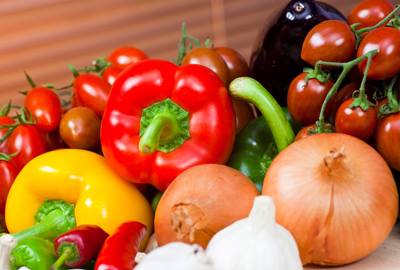
For a food to be considered "sustainable," it must meet certain standards. Sustainable foods are those whose production can be assured long term – sustained, in other words. If a food is grown or produced in a manner that is destructive to the environment or human and animal health, it is not considered sustainable.
For example, crops that are heavily sprayed with weed killer, fungicide, and pesticide are not only less healthy for human consumption; the chemicals used in agriculture "kill" the soil eventually, and plants have to be forced to grow by the use of more and more synthetic fertilizers. The dead soil then erodes, creating hazardous, toxic run-off when it's wet and toxic dust when it's dry. Ultimately, this type of farming practice cannot be sustained.
Another aspect of sustainability is fossil fuel use. Foods that are shipped long distances require a great deal of fossil fuel as they go from farm to table. Because fossil fuels are a non-renewable energy source, foods that require a lot of these fuels are not considered sustainable.
So how can you make choices for sustainable food? Here are some tips to help.
1. Local Food
Generally speaking, local food that is grown on small, individual farms or in gardens is more sustainable than mass-produced foods from big agribusiness. For one thing, the foods are simply closer in proximity and don't have to be shipped long distances. For another, local foods tend to require less chemical intervention when they are in the field or in transport.
Foods that are shipped long distances tend to be sprayed with fungicides and preservatives. This is much less likely with local produce.
2. Organic Foods
Organically grown foods are, as a rule, more sustainable than conventionally-grown foods. Because they are grown without synthetic chemicals, organic foods do not contribute to the toxic load on the environment. In some cases, organic foods actually enhance their surrounding ecosystems. Organic apple farmers, for example, provide a pesticide-free sanctuary for honeybees and other pollinating insects.
Note, though, that mass-produced organic foods may in fact contribute to pollution if they are shipped long distances. So the closer the source of your organic food, the more sustainable it is.
3. Seafood
This is one of those dicey areas in the world of sustainability. Some contend that there is no such thing as sustainable seafood in our modern era. Others suggest sticking with wild-caught seafood that is at the bottom of the food chain, such as sardines.
To complicate matters, populations of seafood can go from sustainable (when thriving) to endangered (when numbers are low). To help the concerned consumer, the Audubon Society offers a printable, wallet-sized card on their website. A good rule of thumb is to buy only seafood that is abundant and that has been harvested responsibly.
4. Cut Back on Meat
Ingesting less meat – particularly red meat – is the first step to making your dinner table a sustainable one. Mass production of meat involves feed lots, slaughterhouses, and all sorts of messy business that pollutes the environment with animal waste.
If you do eat meat, consider raising your own or find a local farmer who will sell you some of his or her meat when it's butchering time. You also might know a hunter who can provide you with some of the freshest free-range meat available. Also, many health food stores and conventional groceries sell grass-fed, free-range beef and poultry.

